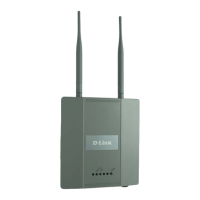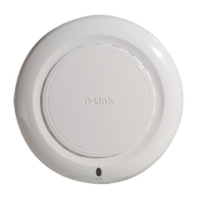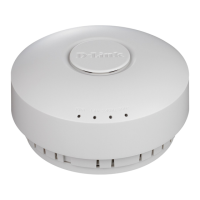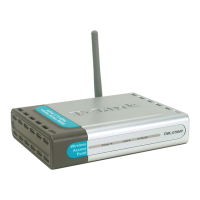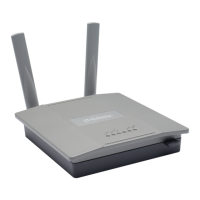ModifyingRadioSettings
D-Link UnifiedAccessPointAdministrator’sGuide
November2011 Page60
UnifiedAccessPointAdministrator’sGuide
Table19describesthefieldsandconfigurationoptionsfortheRadioSettingspage.
Note:TheDWL‐3600APsupportsonlyoneradio,anditoperatesinthe2.4GHzband(802.11b/g/n).
SomefieldsinthefollowingtablearenotavailablefortheDWL‐3600AP.
Table19:RadioSettings
Field Description
Radio SelectRadio1orRadio2tospecifywhichradiotoconfigure.Therestofthesettingson
thispageapplytotheradioyouselectinthisfield.Besuretoconfiguresettingsforboth
radios.
Radio1operatesinthe5GHzband(802.11a/n),andRadio2operatesin
the2.4GHz
band(802.11b/g/n).
Status(On/Off) SpecifywhetheryouwanttheradioonoroffbyclickingOnorOff.
Ifyouturnoffaradio,theAPsendsdisassociationframestoallthewirelessclientsitis
currentlysupportingsothattheradiocanbegracefullyshutdownandthe
clientscan
starttheassociationprocesswithotheravailableAPs.
Mode TheModedefinesthePhysicalLayer(PHY)standardtheradiouses.
Note:Themodesavailabledependontheradioselected.
Selectoneofthefollowingmodesforradio1(DWL‐6600APandDWL‐8600APonly):
• IEEE802.11aisaPHYstandard
thatspecifiesoperatinginthe5GHzU‐NIIbandusing
orthogonalfrequencydivisionmultiplexing(OFDM).Itsupportsdataratesranging
from6to54Mbps.
• IEEE802.11a/noperatesinthe5GHzISMbandandincludessupportforboth
802.11aand802.11ndevices.IEEE802.11nisanextensionof
the802.11standard
thatincludesmultiple‐inputmultiple‐output(MIMO)technology.IEEE802.11n
supportsdatarangesofupto248Mbpsandnearlytwicetheindoorrangeof802.11
b,802.11g,and802.11a.
• 5GHzIEEE802.11nistherecommendedmode fornetworkswith802.11ndevices
thatoperateinthe
5GHzfrequencythatdonotneedtosupport802.11adevices.
IEEE802.11ncanachieveahigherthroughputwhenitdoesnotneedtobe
compatiblewithlegacydevices(802.11a).
Selectoneofthefollowingmodesforradio2:
•IEEE802.11b/goperatesin the2.4GHzISMband.IEEE802.11bis
anenhancement
oftheinitial802.11PHYtoinclude5.5Mbpsand11Mbpsdatarates.Itusesdirect
sequencespreadspectrum(DSSS)orfrequencyhoppingspreadspectrum(FHSS)as
wellascomplementarycodekeying(CCK)toprovidethehigherdatarates.Itsupports
dataratesrangingfrom1to11
Mbps.IEEE802.11gisahigherspeedextension(up
to54Mbps)tothe802.11bPHY.Itusesorthogonalfrequencydivisionmultiplexing
(OFDM).Itsupportsdataratesrangingfrom1to54Mbps.
• IEEE802.11b/g/noperatesinthe2.4GHzISMbandandincludessupportfor
802.11b,802.11g,and802.11n
devices.
• 2.4GHzIEEE802.11nistherecommendedmodefornetworkswith802.11ndevices
thatoperateinthe2.4GHzfrequencythatdonotneedtosupport802.11b/gdevices.
IEEE802.11ncanachieveahigherthroughputwhenitdoesnotneedtobe
compatiblewithlegacydevices (802.11b/g).
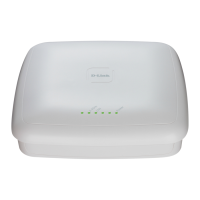
